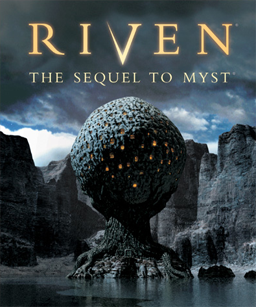
Riven: The Sequel to Myst is a puzzle adventure video game, the second in the Myst series of games. Developed by Cyan Worlds, it was initially published by Red Orb Entertainment, a division of Broderbund. Riven was distributed on five compact discs and released for Mac and Windows personal computers on October 31, 1997, in North America; it was later released on a single DVD-ROM in 1998. Riven was also ported to several other platforms. The story of Riven is set after the events of Myst. Having been rescued from the efforts of his sons, Atrus enlists the help of the player character to free his wife from his power-hungry father, Gehn. Riven takes place almost entirely on the Age of Riven, a world slowly falling apart due to Gehn's destructive rule.

The 7th Guest is an interactive movie puzzle adventure game, produced by Trilobyte and originally released by Virgin Interactive Entertainment in April 1993. It is one of the first computer video games to be released only on CD-ROM. The 7th Guest is a horror story told from the unfolding perspective of the player, as an amnesiac. The game received press attention for making live action video clips a core part of its gameplay, for its then-unprecedented amount of pre-rendered 3D graphics, and for its adult content. The game was very successful, with over two million copies sold. It, alongside Myst, is widely regarded as a killer app that accelerated the sales of CD-ROM drives. The 7th Guest has subsequently been re-released on Apple's app store for various systems such as the Mac. Bill Gates called The 7th Guest "the new standard in interactive entertainment".
An action-adventure game is a video game hybrid genre that combines core elements from both the action game and adventure game genres.
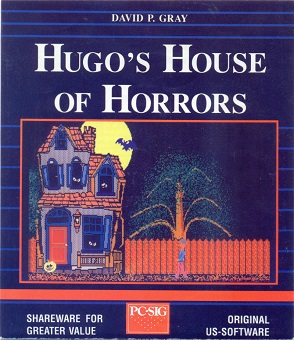
Hugo's House of Horrors is a parser-based adventure game designed by independent software developer David P. Gray and published as shareware by Gray Design Associates in 1990. The game follows the character Hugo as he searches for his girlfriend Penelope in a haunted house. The player inputs text commands to solve puzzles and progress through the house. It was inspired by Leisure Suit Larry in the Land of the Lounge Lizards, and it was followed by Hugo II, Whodunit? in 1991.
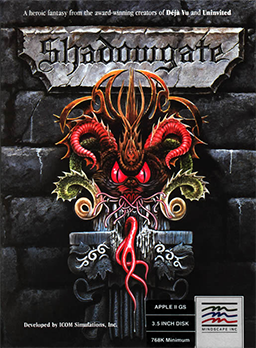
Shadowgate is a black-and-white point-and-click adventure game published for the Macintosh as part of the MacVenture series. The game is named for its setting, Castle Shadowgate, residence of the evil Warlock Lord. The player, as the "last of a great line of hero-kings" is charged with the task of saving the world by defeating the Warlock Lord, who is attempting to summon up the demon Behemoth out of Hell. Later that year, a color version of the game was released for the Amiga and Atari ST, and in 1989 for the Nintendo Entertainment System.
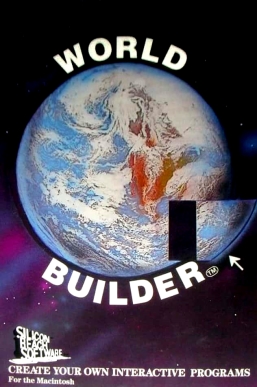
World Builder is a game creation system for point-and-click adventure games. It was released for Macintosh in 1986 by Silicon Beach Software and had already been used for creating Enchanted Scepters in 1984. On August 7, 1995, developer William C. Appleton released World Builder as freeware.
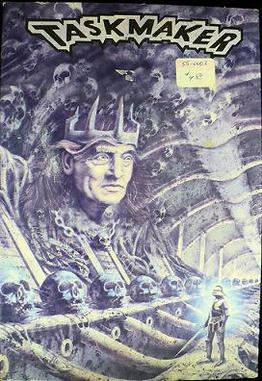
TaskMaker is a role-playing video game for the Macintosh. It was developed by American software company Storm Impact. Originally published in 1989 by XOR Corporation, it was upgraded and re-released as shareware in 1993 by Storm Impact, featuring color graphics and compatibility with newer versions of the classic Mac OS. The player controls a protagonist who is under the mentorship of the eponymous TaskMaker, a ruler who assigns ten different quests. Completing these quests involves solving various gameplay puzzles, along with battling monsters, and the final task involves a battle against the TaskMaker himself. TaskMaker received mixed reception regarding its overall storyline and gameplay.

Quest for Glory: So You Want to Be a Hero is a 1989 adventure game/role-playing game hybrid, designed by Lori Ann Cole and published by Sierra On-Line for MS-DOS. It is the first game in the Quest for Glory series, and has been credited for being a genre-defining game, as it tried to mix graphical adventure gaming with role-playing-like elements such as statistic building that would actually affect the ability to accomplish certain parts of the game. The game has a satirical and silly tone. Ports for the Amiga, Atari ST, and NEC PC-9801 were released in the early 1990s. A VGA remake, titled Quest for Glory I: So You Want to Be a Hero, was released in 1992 for DOS and later in 1994 for Mac OS.

Math Rescue is a 1992 educational platform game created by Karen Crowther of Redwood Games and published by Apogee Software. Its early pre-release title was "Number Rescue". Released in October 1992 for the MS-DOS platform, it is a loose successor to the earlier game Word Rescue, whose game engine was used to power the new game with minor changes. Math Rescue was initially released as shareware but later achieved a retail release. It was followed by Math Rescue Plus. There were plans to have a sequel to the game called "Gruzzle Puzzles" but it was never started.

Beyond Shadowgate is a TurboGrafx CD sequel to the 1987 Mac and MacVenture game Shadowgate. Unlike its predecessor, Beyond Shadowgate is a classical point-and-click adventure viewed from a platform perspective.

Mystery Fun House is a text adventure game written by Scott Adams, "Adventure 7" in the series released by Adventure International. The player explores a fun house explore to locate a set of secret plans, solving puzzles along the way. Mystery Fun House was produced in only one week and was among the most difficult games in the series.
Pie in the Sky is a 2.5D and 3D first-person shooter engine most popular in the mid-to-late 1990s by Pie in the Sky Software, also known as Power 3D and the 3D Game Creation or 3D Game Creation System engine. The engine was used in two games by the company as well as many other independent games and amateur projects after it was turned into a commercial game creator, largely because it minimized the amount of computer programming knowledge needed to make 3D games in its editing tools, making it suitable even for beginners with no game-design experience.
An adventure game is a video game genre in which the player assumes the role of a protagonist in an interactive story, driven by exploration and/or puzzle-solving. The genre's focus on story allows it to draw heavily from other narrative-based media, such as literature and film, encompassing a wide variety of genres. Most adventure games are designed for a single player, since the emphasis on story and character makes multiplayer design difficult. Colossal Cave Adventure is identified by Rick Adams as the first such adventure game, first released in 1976, while other notable adventure game series include Zork, King's Quest, Monkey Island, Syberia, and Myst.
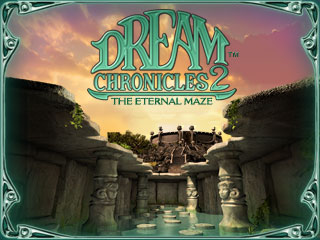
Dream Chronicles 2: The Eternal Maze is a 2008 adventure, hidden object, and puzzle casual game developed by KatGames and originally published by PlayFirst. It is the first sequel to 2007's award-winning game Dream Chronicles, also the second installment in the Dream Chronicles series, plus the middle part of the first trilogy called Faye's Journey.
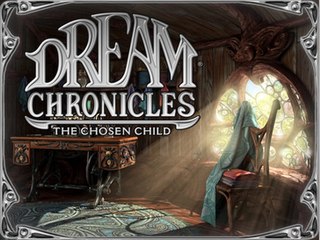
Dream Chronicles: The Chosen Child is a 2009 adventure and puzzle casual game developed by KatGames and originally published by PlayFirst. It is the third installment in the Dream Chronicles series, the second sequel to 2007's award-winning game Dream Chronicles and also the last part of the first trilogy called Faye's Journey.

Dream Chronicles, first released in 2007, is a series of adventure, hidden object and puzzle casual games. It was created by Miguel Angel Tartaj for KatGames and published by PlayFirst. It's also the name of the first game in the series.
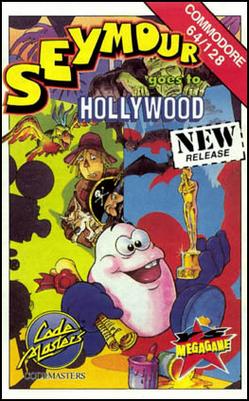
Seymour Goes to Hollywood, also known as Seymour at the Movies, is a platform and adventure game developed by Big Red Software and originally published in Europe by Codemasters in 1991. Players control Seymour, a small potato-like creature who wishes to be a film star. The film's script has been locked in a safe, meaning Seymour must solve puzzles by collecting and using objects scattered throughout the game in order to progress, ultimately retrieving the script and allowing filming to start.

Hugo II, Whodunit? is a parser-based adventure game designed by independent software developer David P. Gray and published as shareware by Gray Design Associates in 1991. It is the sequel to 1990's Hugo's House of Horrors, and it was followed by Hugo III, Jungle of Doom! in 1992.

The Legend of Kyrandia: Book One is a 2D point-and-click adventure game, and the first game in the Fables & Fiends series. It was developed by Westwood Studios and published by Virgin Games in August 1992.
















